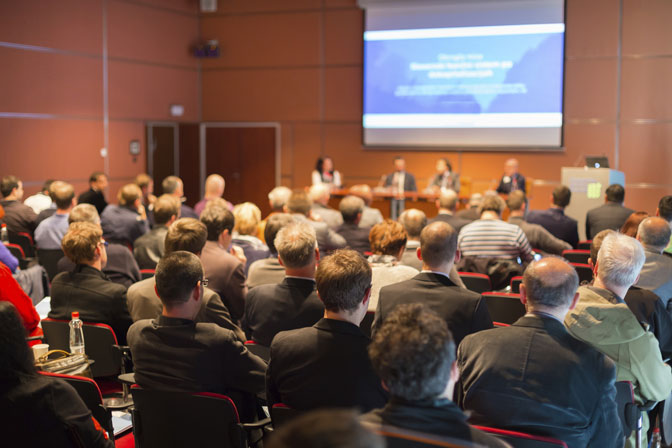
At the upcoming SPIE Advanced Lithography Conference, there will be 500 different presentations, courses, and events packed into just one week. SPIE Advanced Lithography is divided into seven different conferences that cover a variety of topics, including extreme ultraviolet (EUV) lithography, metrology, optical microlithography, and patterning materials. This year, Dow experts will be presenting four sessions and one poster presentation as part of the Advances in Patterning Materials and Processes conference (#9779).
Monday, February 22, 11:00am
9779-1 – Keynote Presentation
Moore or less? The map grows increasingly complex as materials and processes abound
Dr. Pete Trefonas, Ph.D.
Lithographic processes have increased in complexity, with a plethora of materials introduced to go below and above the resist film, materials to enable post-process adjustment of the pattern dimensions and roughness and collapse, and then a variety of schemes to frequency multiply. We will review the many schemes and their chemistry with a particular eye on their necessity, potential and impact. How can we simplify the lithographic process without sacrificing resolution or process window, and maintain the march of progress onwards? Will EUV simplify the process? Will DSA have a role?
Tuesday, February 23, 10:30am
9779-17 – EUV Materials IV: Metal Oxide Resists
Systematic investigation of the synthesis, characterization and switching mechanism of metal oxide nanoparticle resists
Dr. Pete Trefonas, Ph.D. and Dr. Jim Thackeray, Ph.D.
In collaboration with Meiliana Siauw, Ke Du, David Valade, Andrew K. Whittaker, and Idriss Blakey from the University of Queensland, Australia
Metal oxide nanoparticle resists have recently emerged as next generation photoresist materials which exhibit promising performance for EUV lithography. In this work, we will present a thorough description of the synthesis and characterization of metal oxide nanoparticles, demonstrate the ability of the nanoparticle resist to pattern ~20 nm features, and provide an insight into the insolubilization mechanism of the resist. The stability study of the nanoparticles over time and storage condition will also be presented.
Tuesday, February 23, 6:00pm
9779-67 – Interactive Poster Session – Advanced Processing
Chemical trimming overcoat: an enhancing composition and process for 193nm lithography
Cong Liu, Kevin Rowell, Lori Joesten, Paul Baranowski, Irvinder Kaur, Wanyi Huang, JoAnne Leonard, Tom Estelle, Charlotte Cutler, Gerd Pohlers, Wenyan Yin, Patricia Fallon, Mingqi Li, Cheng Bai Xu, and Pete Trefonas
As the critical dimension (CD) of devices is approaching to the resolution limit of 193nm photo lithography, multiple patterning processes have been developed to print smaller CD and pitch. Multiple patterning and other advanced lithographic processes often require the formation of isolated features such as lines or posts by direct lithographic printing. The formation of isolated features with an acceptable process window, however, can pose a challenge as a result of poor aerial image contrast at defocus. Herein we report a novel chemical trimming overcoat (CTO) process as an extra step after lithography that allows us to achieve smaller feature size and better process window.
Wednesday, February 24, 1:40pm
9779-31 – Session 10 – Advanced Patterning Process Characterization
High-speed AFM studies of 193 photoresist during TMAH development
Johnpeter Ngunjiri, Greg F. Meyers, Dr. James Cameron, Ph.D., Yasuhiro Suzuki, Hyun K. Jeon, Dave Lee, Kwang Mo K. M. Choi, Jung Woo Kim, Kwang-Hwyi Im, and Hae-Jin Lim
In this paper we investigated the dynamic process of resist development in real time. Using high-speed atomic force microscopy (HS-AFM) in dilute developer solution, changes in morphology and nanomechanical properties of patterned resist were monitored. The Bruker FastScan™ AFM was applied to analyzed acrylic-based polymer resist in developer. HS-AFM operated in PeakForce™ mapping mode allowed for concurrent measurements of resist stiffness, adhesion to AFM probe and deformation during development. HS-AFM data revealed detailed information about initial resist morphology, followed by a swelling process and eventual dissolution of the exposed resist areas. HS-AFM showed potential for tracking and understanding development of patterned resist films and can be useful in evaluating the dissolution of different resist designs.
Thursday, February 25, 8:00am
9779-44 – Session 12 – Process Improvements for Advanced Patterning
Additive chemistry and distributions in photoresist thin films
Dr. Jim Thackeray, Ph.D., Chang-Young Hong, and Michael B. Clark Jr.
The lithographic performance of photoresists is a function of the vertical distribution of formulation components, such as photoacid generator (PAG) molecules, in photoresist thin films and how these components undergo chemical modification and migrate within the film during the lithography processing steps. This presentation will discuss how GCIB-SIMS depth profiles were used to monitor the PAG and quencher base distributions before and after exposure and post-exposure bake processing steps for different PAG/photoresist formulations. The authors will also highlight the lithographic performance of negative-tone develop (NTD) resists and the correlation with vertical distribution of resist components. In addition, acid diffusion lengths will be extracted from the acid distribution before and after post-exposure bake.

In addition, Dow’s Dan B. Millward serves as one of the co-chairs for the session DSA Process and Integration on Wednesday, February 24th. This is a joint session shared by the Advances in Patterning Materials and Processes and Alternative Lithographic Technologies conferences.
The 41st Annual SPIE Advanced Lithography Conference will be held February 21-25, 2016 at the San Jose Marriott and San Jose Convention Center in San Jose, CA. We hope to see you there!
™ FastScan and PeakForce are registered trademarks of the Bruker Corporation.